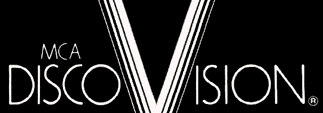|
NEW YORK — The U S. Pioneer Electronics Corp. and DiscoVision Associates demonstrated a consumer model laser optical videodisc system during a joint press conference at the Waldorf Astoria Hotel last week. According to Ken Kai, executive vice president of U.S. Pioneer, the company will begin to sell the videodisc players in four markets starting in June.
The initial four markets will be Minneapolis/St. Paul; Dallas/Fort Worth; Madison, Wisconsin; and Syracuse, N.Y. Kai said that the Pioneer videodisc player will have a suggested retail price of $749.00. The company plans to expand into four additional markets every 60 to 90 days. "We totally expect to be in full national distribution by 1981."
MCA, Inc. and Philips N.V. of Holland are the companies responsible for developing the basic technology for the laser-optical videodisc system. This technology, which includes many patents, has been under development since the early ’70s.
In July 1977, MCA DiscoVision, Inc. and Pioneer Electronic Corp., the parent of U.S. Pioneer, formed the Universal Pioneer Corp , with headquarters in Tokyo, to manufacture videodisc players. In September of last year, MCA and the IBM Corp. formed a partnership called DiscoVision Associates, whose purpose was to master and replicate videodisc software for the optical laser system. Subsequently, the 50% interest in Universal Pioneer that was formerly held by MCA DiscoVision was assumed by DiscoVision Associates.
A typical half-hour DiscoVision videodisc rotation at a speed of 1800 rpms, is "read" by a highly focused laser beam, which does not come in contact with the surface of the disc. Audio and visual information are stored in as many as fourteen billion tiny pits which are arranged in up to fifty-four thousand circular tracks. Each track is equivalent to one television frame. When the laser beam strikes the encoded pits, the beam is interrupted, and the on-off reflection patterns are then translated into electronic impulses. When the player is hooked-up to a television set and stereo sound system, the electronic impulses are decoded into a simultaneous picture and two-channel stereo sound.
The Pioneer player, which incorporates microprocessor technology, offers frame-by-frame display, slow motion, and freeze-frame capabilities with the half-hour per side disc. These capabilities are lost in the discs formatted for one hour per side, because more than one frame of source material must be encoded on each microscopic circular track. Both the short and long discs are encoded with frame-by-frame reference numbers, providing the user with the ability to search out any given frame. Discs will be priced from six to 20 dollars depending upon their length and the type of programming involved.
James Fiedler, president of MCA DiscoVision, Inc., which will provide software for the Pioneer system, promised "a continuous supply of new programming" for the Pioneer system. Fiedler said that his company will initially concentrate on programming current theatrical motion pictures such as ‘1941' and 'The Jerk’, musical acts, and educational material for the discs. In a question and answer session after the demonstration, Fiedler expressed confidence that unresolved royalty arrangements concerning this new medium (Cash Box, March 29) would not impede the development or distribution of videodisc software. In addition, Kai announced that Pioneer had formed its own subsidiary. Pioneer Artists, that will independently "produce and acquire" musical performance software.
John J. Keilly, president of DiscoVision Associates, which is responsible for mastering and manufacturing the actual discs, said that his company is "currently engaged in negotiating with other companies for the replication of the discs." Reilly would not name the companies involved, citing the confidentiality of the negotiations.
An optional "full-function remote control" device will be available for a suggested retail price of $50.00. Pioneer is also developing a "PCM converter," a device which will enable the laser-optical system to convert digitally recorded material into analog format for playback.
A similar videodisc player, manufactured by the Magnavox Consumer Electronics Co., and also based on MCA and N.V. Philips technology, is already on sale in some markets.
|
